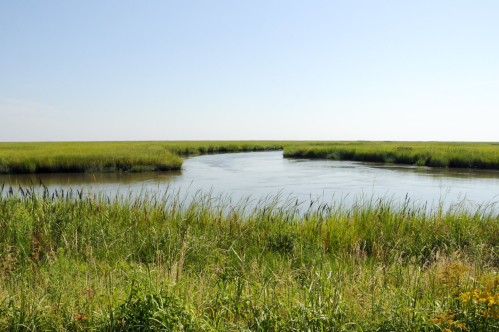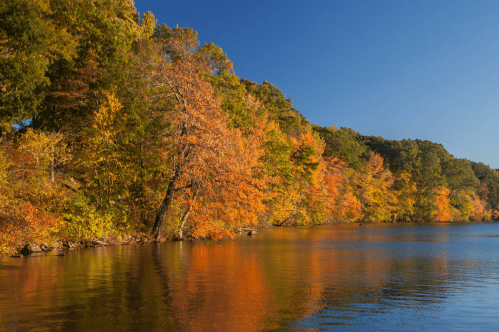Bombay Hook National Wildlife Refuge was established in March of 1927, and it consists of a 16,000-acre refuge and breeding ground for migratory and wintering waterfowl along the Atlantic Flyway. Federal Duck Stamp funds helped purchase the land from local farmers and landowners. Is the most remote, isolated spot in Delaware - with nothing around for miles but marsh, wetlands, and the occasional walking trail or observation tower.
Bombay Hook is a hiker's paradise, but it can be enjoyed from your car as well.
Travel the 12 mile auto-tour, which will bring you through the preserved habitats and allow you to see birds, foxes, turtles, frogs and more.
The refuge has walking trails throughout - some are boardwalks, some are dirt trails.
On your trip through the refuge, stop to walk one of the five trails and climb one of three 30-foot observation towers. You'll truly be able to see just how out in the middle of nowhere you are.
Other than the hundreds of birds and other critters roaming about, you might be here on your own.
Be sure to bring bug spray if you're planning a long excursion. Because the refuge is wetlands, greenheads aren't unheard of even in the cooler weather.
The refuge is so large that it's possible to wander for hours and not run into anyone else.
I frequently walk through Bombay Hook for hours without running into another soul - particularly in the Fall. It is one of the most peaceful places in Delaware.
Bombay Hook is a photographer's dream, too. The wildlife and wildflowers make for some amazing shots.
Don't forget your fully charged camera. Novice photographers can find landscapes that make composition easy, and experienced photographers can look for new nature angles and create stunning artwork.
If you're lucky, you'll see some of the Bombay Hook foxes.
It's not uncommon to run into them wandering around with their freshly-caught dinners.
In the Springtime, kits are common and they are absolutely adorable.
Just be respectful of the wildlife. Even though the foxes are adorable, and some are tame enough to get close to visitors, they're still wild creatures, and you should keep your distance.
Bald eagles make their home at Bombay Hook, so keep your eye on the treetops as well as the wetlands.
It's easy to keep your eyes on the horizon; after all, much of the refuge is focused on preserving the wetlands and the waterfowl. Don't forget to set your eyes on the skies and catch some of the incredible owls and eagles that also call Bombay Hook their home.
If You Only Have One Day to Visit This Small Town in Maine, Here’s Everything You Absolutely Can’t Miss

If You Only Have One Day to Visit This Small Town in Massachusetts, Here’s Everything You Absolutely Can’t Miss

If You Only Have One Day to Visit This Small Town in Maryland, Here’s Everything You Absolutely Can’t Miss

This Black-Necked Stilt is one example of waterfowl you'll find in the marsh.
So many migratory birds make their home here that it is considered a migratory stop of international significance.
Snow Geese are common here, too. Don't be surprised if you see hundreds flying away at once.
Perhaps the most interesting photos from Bombay Hook show hundreds, if not thousands, of snow geese taking flight as a flock.
There is nothing like a sunrise over the Delaware Bay, and Bombay Hook might be the best place to spot one.
You can drive the Refuge Auto Tour Route Sunrise to sunset, every day of the year. There is also a Visitor Center, which is open 8 a.m.- 4 p.m. Mon.-Fri. all year, and from 9 a.m.-5 p.m. on Saturday and Sunday.
The Refuge can be found by putting "Bombay Hook National Wildlife Refuge, 2591 Whitehall Neck Road, Smyrna, DE 19977" into your GPS. If you prefer specific directions, the Refuge's website has them available here. During Hunting Season, there are a few days that the Refuge closes: The back section is closed all day Oct. 10, 12, 14, 2016 and Nov. 11, 12, 16, 2016 and Dec. 12 & 15, 2016 and Jan. 20, 2017. The front section is closed all day Nov. 14 & 18, 2016 and Dec. 14, 2016. Plan your visit around that information so you aren't caught by surprise.
Subscribe to our newsletter
Get the latest updates and news
Thank you for subscribing!
























